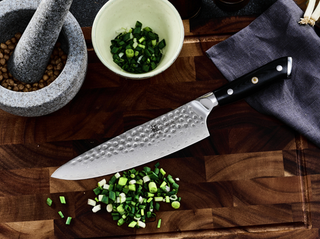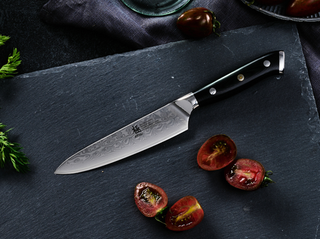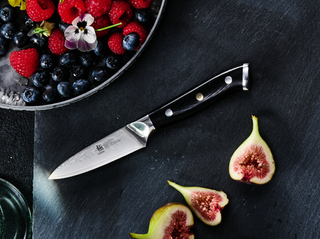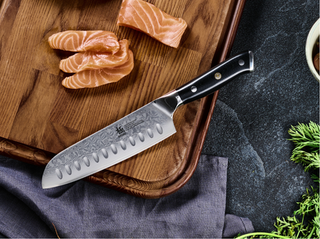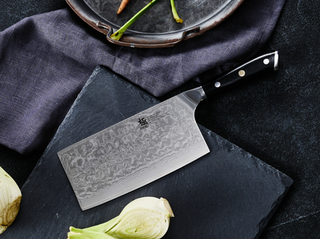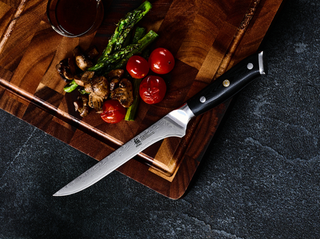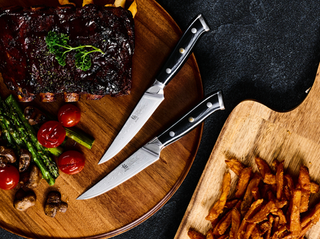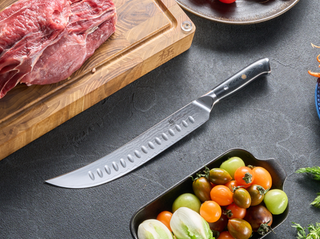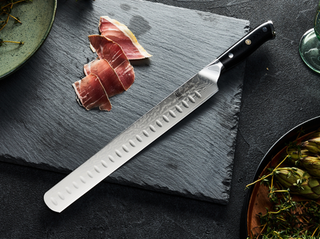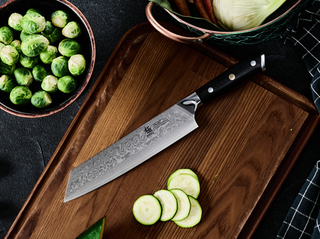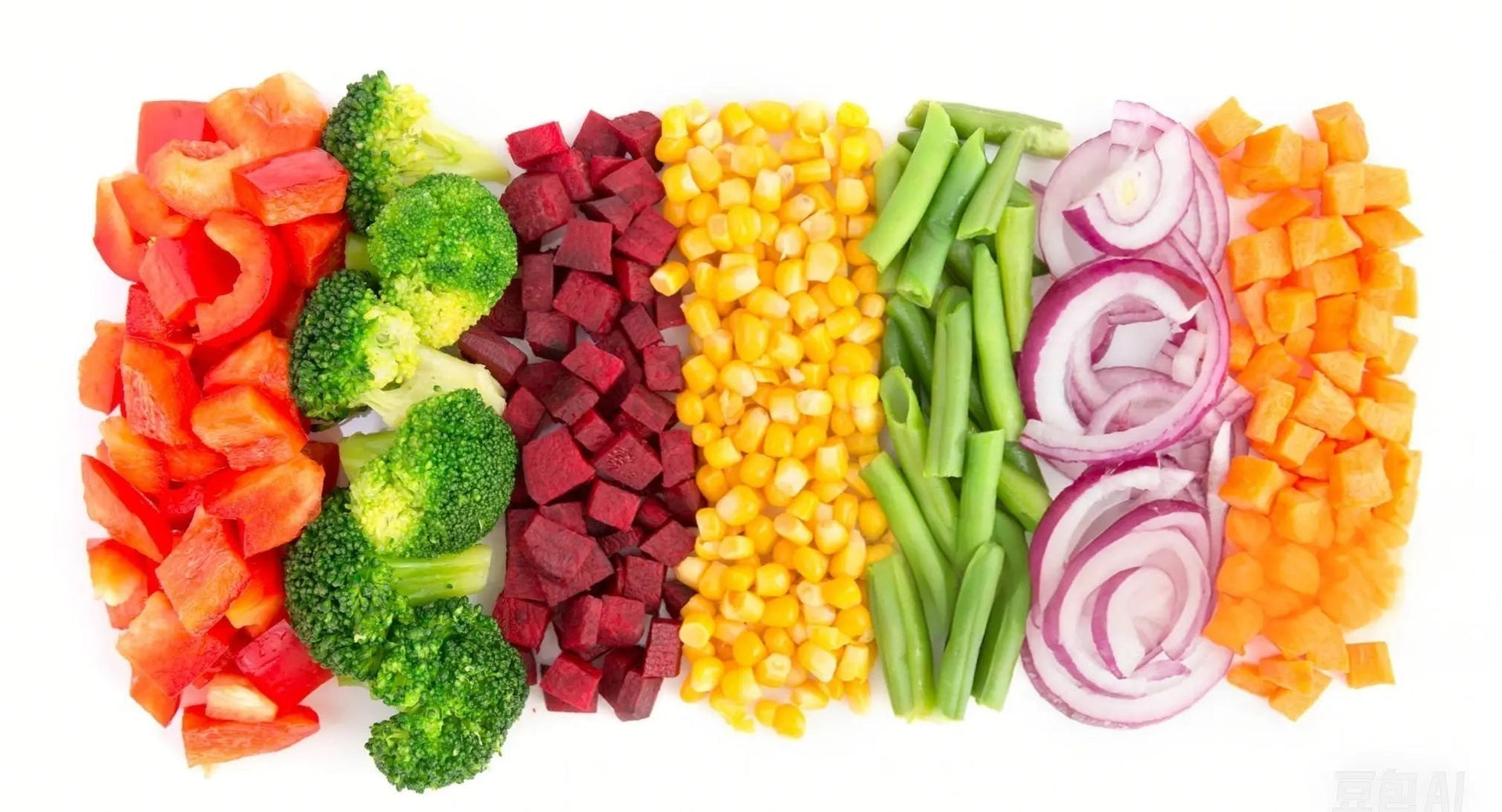Both chopping and dicing mean cutting food into smaller pieces, but size makes all the difference.
Chopping gives you bigger, rougher and irregular pieces (about ½ to 1 inch). Think chunky potato soup or hearty beef stew where you want big, satisfying bites.
Dicing creates smaller, more even cubes (about ¼ to ½ inch). These smaller pieces cook faster and blend into dishes more smoothly, like the tiny onions in pasta sauce that seem to disappear.
Chopping is a rougher, larger cut with less concern for uniformity, while dicing is a precise, smaller cut producing evenly sized cubes.
When to Chop Your Food

Chopping works best when:
- You're making chunky soups or stews
- You want to see and taste each veggie piece
- The food will cook for a long time
- You need to prep quickly (bigger cuts = less cutting!)
Professional culinary schools like Escoffier teach that "A small dice can be good for a salsa or sauce, medium for soups and casseroles, and large for roasted dishes." This shows how size affects cooking applications.
Quick Tip: Chopped veggies add texture and visual appeal to dishes. When a recipe calls for "roughly chopped," don't worry about making perfect shapes!
How to Chop Like a Pro
- Start with a stable cutting board and sharp knife
- Cut your veggie into thick slices (about 1 inch)
- Turn the slices and cut into thick sticks
- Cut across the sticks to make chunky pieces
- Don't stress about perfect shapes—rustic is good!
Food safety experts at the USDA remind us to keep our "fingers tucked for safety and use the knuckles as a guide" when chopping to prevent accidents.
When to Dice Your Food

Dicing works better when:
- Making sauces, omelets, or rice dishes
- You want flavors to blend evenly
- Food needs to cook quickly
- Working with strong-flavored foods like onions or garlic
Pro Tip: The stronger the flavor, the smaller you should dice! Nobody wants to bite into a big chunk of raw garlic.
Different Sizes of Dice
According to professional culinary standards taught at top cooking schools, there are specific measurements for different types of dice:
- Large dice: 3/4 inch cubes
- Medium dice: 1/2 inch cubes
- Small dice: 1/4 inch cubes
Most home recipes simply call for "diced" without specifying the size, so a medium dice (1/2 inch) is usually a safe bet.
How to Dice Perfectly
- Square off your vegetable by trimming the rounded edges
- Cut into thin, even slices
- Stack the slices and cut into pencil-sized sticks
- Cut across the sticks to create small, even cubes
- Take your time—even cuts mean even cooking!
Which is Easier: Chopping or Dicing?
If you're new to cooking, start with chopping! It's more forgiving, faster, and requires less precision. As you get comfortable with your knife, you can practice dicing to level up your skills.
Dicing takes more time and practice but gives you more professional-looking results. Your food will also cook more evenly when the pieces are the same size.
The Right Tools Make All the Difference
While both techniques can be done with any sharp knife, a chef's knife (6-8 inches) works best for most chopping and dicing.
For more detailed dicing work, some cooks prefer a santoku knife. Santoku knives have a flatter edge and a sheepsfoot blade design, which allows for a smooth, efficient up-and-down or push-cut motion rather than a rocking motion.
Further reading: What is a Santoku Knife Used For

Make sure to use a stable cutting board that doesn't slip—a damp paper towel underneath can help keep it steady.
Further reading: How to choose a wood cutting board
Try These Simple Recipes to Practice
Ready to test your new skills? Start with these easy recipes:
- For Chopping Practice: Chunky vegetable soup, roasted vegetables, or fruit salad
- For Dicing Practice: Basic salsa, scrambled eggs with diced peppers, or fried rice
Knowing the difference between chopping and dicing can significantly level up your cooking results. And with more practice, these knife skills can become your second nature. Your knives—and your taste buds—will thank you.
Frequently Asked Questions (FAQs)
Q1: What is the difference between "chop" and "dice"?
A: Chopping means cutting ingredients into roughly uniform but irregularly shaped pieces, usually larger and less precise. Dicing requires cutting into uniformly sized, neat cubes. Dice demands more precise knife skills, while chopping is more rustic.
Q2: What are the typical sizes for chopped and diced pieces?
A: Chopped pieces are generally around 1/2 to 3/4 inch (1.3 to 2 cm) and are not exact in shape. Diced pieces vary: large dice about 3/4 inch, medium dice about 1/2 inch, and small dice about 1/4 inch (0.6 cm).
Q3: When should I use chopping versus dicing?
A: Use chopping for long-cooked dishes like stews and soups where irregular, larger pieces hold texture well. Dicing is better for dishes requiring uniform cooking and presentation, such as stir-fries or salads.
Q4: What is the difference between mincing and dicing?
A: Mincing means cutting into very fine, almost minced or paste-like pieces, commonly used for garlic or herbs. Dicing creates evenly sized cubes much larger than minced pieces.
Q5: How can beginners avoid uneven cuts?
A: Use a sharp knife, maintain a steady cutting technique, first slice the ingredient evenly, then cut into strips of equal width, and finally into cubes. Practice and patience improve consistency.
Q6: What type of knife is best for chopping and dicing?
A: Chef’s knives or Santoku knives are recommended for chopping and dicing as they are versatile, sharp, and comfortable for various cutting techniques.
Q7: Why does the cutting style affect the taste or texture of the food?
A: The size and shape of the cut impact cooking time and texture. Uniform diced pieces cook evenly and quickly, while larger chopped pieces give more bite and texture, influencing flavor perception and mouthfeel.
SOURCE:
1. Culinary Institute of America. (2025). Five Knife Skills Every Chef Must Have!
2. American Heart Association. (2024). Knife Skills 101.
3. Auguste Escoffier School of Culinary Arts. (2024). Knife Skills: 10 Knife Cuts Every Professional Cook Should Know.
4. The Spruce Eats. (2023). Basic Techniques for Professional Culinary Arts Knife Cuts.
5. U.S. Department of Agriculture. (2024). Careful Cutting: Knife Safety Tips.
